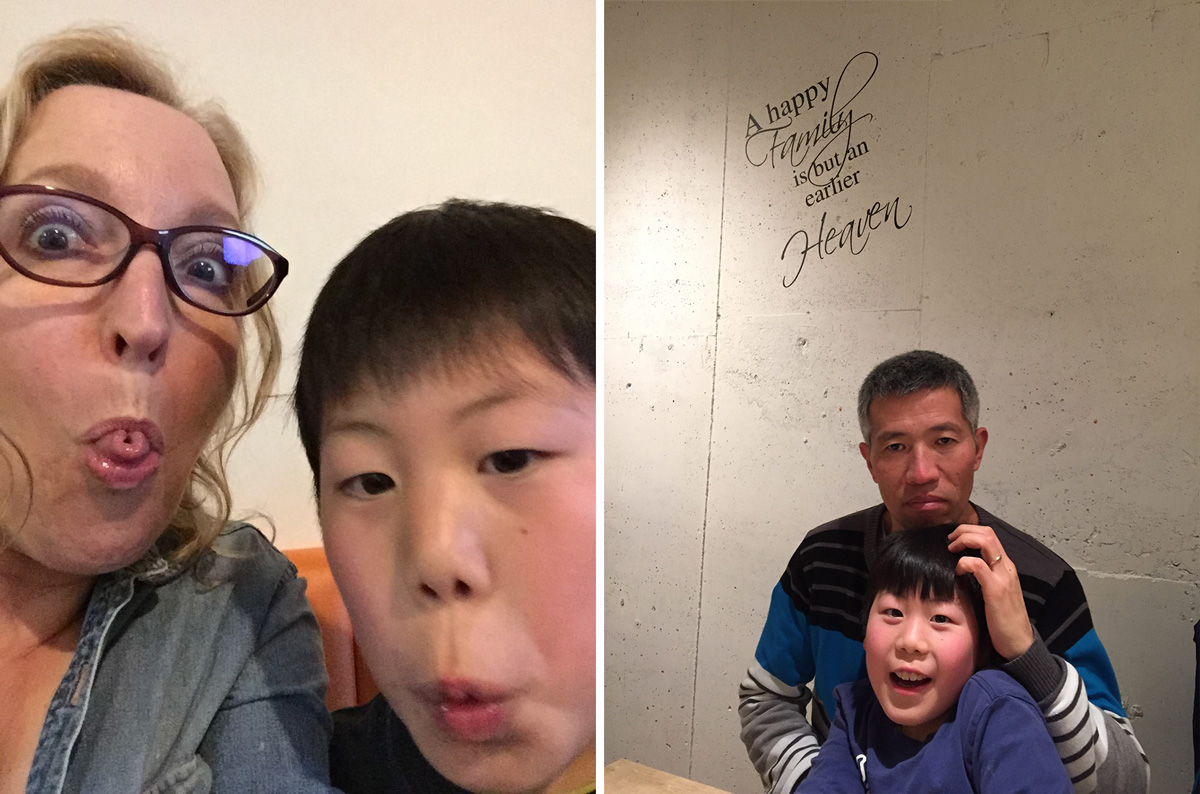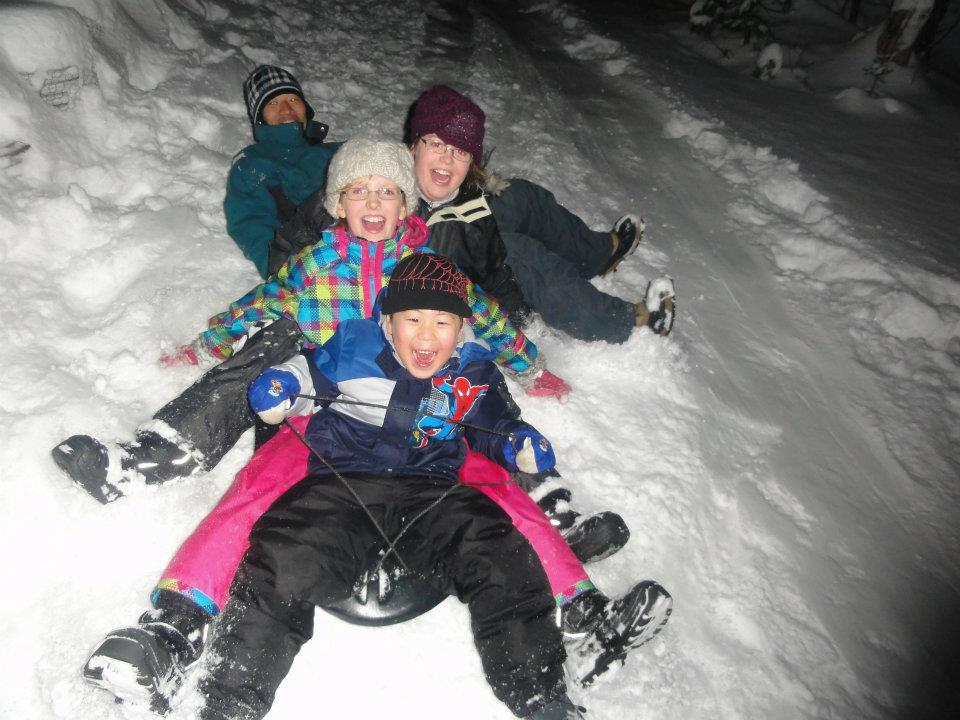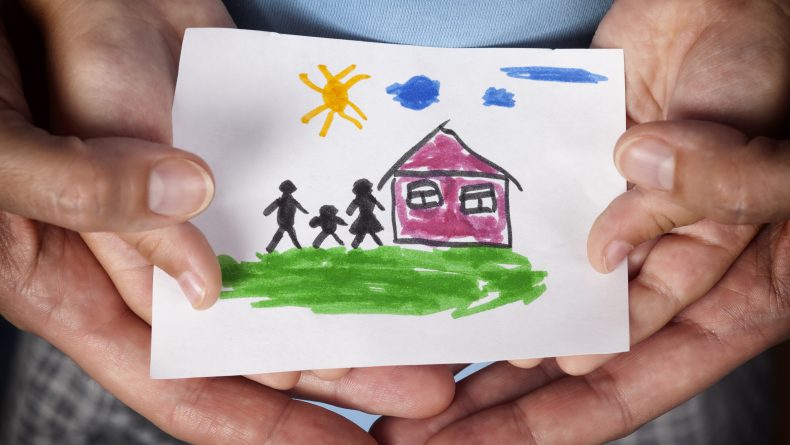One Canadian Woman’s Journey To Adopting In Japan
Part II: How They Did It
In Part I of “Adopting in Japan,” we introduced the beginning of Melodie and her family's journey of adopting in Japan. This week we follow them through the process of adoption, asking the big question: How Did They Actually Do It?
After discussing what to do with my husband, we began doing research on the internet and decided to try an “international” agency that claimed to place mixed-race children with families. We imagined getting a mixed-race child from a different country so that we would all look different from each other, naively thinking that if we did so, he or she would identify with both of us equally — not more with one than the other. This organization’s website gave minimal information, especially about costs (which should have been a red flag), but we thought we’d give it a try. I even went so far as to call and ask them for a referral from a successful family. They readily put me in touch with such a family and our hopes were high.
At the interview, the “caseworker” complained about her low salary and asked if I knew anyone who’d want to do her job, which I found a little odd. Before going, we were told the initial interview would cost about ¥20,000 (I don’t remember exactly, because it was 12 years ago). After our initial morning meeting, we were told we’d have to pay more to continue the process through the afternoon.
Once the interview started, the first question she asked me was, ‘Why do you want to adopt?’
Unfortunately, my response (which I thought was quite natural, given the emotional nature of adopting) was to start crying, and from that moment on, I knew that we had “failed.” Although we continued on with the interview, we were later told that our case would be closed because I was “emotionally unstable.”
Including round-trip travel to Tokyo from Kyushu, where we were living at the time, this one-day enterprise cost us ¥100,000. Friends who knew about that agency later told me that they had rarely heard success stories, that it seemed to specialize primarily in getting money from hopeful couples. Friends said that if they had known we were trying that route, they would have warned me off.

We were discouraged at first, but after waiting a while, we decided to try again. So we went to the local social welfare office, which I recommend because it is government-controlled and free. I was concerned that my being foreign might stand in our way, so I asked my husband to find out up front if that might be the case. The staff said they didn’t think so, and we were given the paperwork and once that was completed they signed us up for a home study. On the form, we could mark a preference for age and gender; we chose a child over three because we were both working (my salary is higher, so there was no question of my taking a leave); as for gender, we weren’t particular. Two people came to our home shortly afterwards to interview us and we were registered into the system. When our turn came up, we would be contacted. We attended monthly information sessions and meetings. One woman in the group in particular, Mrs. N., seemed to be on our side and was trying hard for us to get matched as soon as possible. By the way, I would recommend going this route first. There should be no problem with mixed-race couples and you will be treated fairly. There are no costs involved, but there is waiting.
We had pretty much given up but three years later, just after Christmas, we got the call.
We had been matched with a little boy. A caseworker came to our home with a photograph of a cute 3-year-old. Would we like to meet him? Heck yes! There were concerns because usually visitations take place from six months to a year after a match, but I had just accepted a tenured position and we would be moving to another prefecture. This meant that we would have to step up our visits and start doing overnights with the little boy as soon as possible because we would be moving within three months. We had planned a trip to Canada before moving, but had to cancel it in order to start the visitations.
The first visits were rough.
Our boy hardly acknowledged our presence and would stand at the door to the room looking for his caregiver. Later, we started bringing books, puzzles and small musical instruments, and he started to play with us a little. One day, when his lunch was brought to him, he just sat and wouldn’t eat it. I wondered if he wanted to be fed, so picked up his chopsticks and started feeding him. To my surprise, he ate everything.

Then, we were told we could take him off the premises. To make sure that he was comfortable going out with us, I asked my husband to hand him the keys to the car and let him unlock it, which he proudly did. We visited the nearby airport to look at the planes and also went to a local department store to play in the game center. He would sit silently next to me on the Anpanman ride, watching the candy dispenser — as soon as the candy came out, he’d grab it and pop it in his mouth right away. He was scared when we went to the pet store, which we had thought would be fun for him, so my husband had to pick him up and carry him around (I wanted to carry him, but he was a heavy boy). Sometimes we went to the park for a picnic and to play. I realized that at 45 years old, I didn’t have the energy to run around after a little boy, but fortunately, my sporty husband — who is four years younger than I — did.
Our boy didn’t talk to us at all, except to tell us when he had to go to the toilet. He would point if he wanted something. He was happy enough to drink juice and eat donuts with us, but would do so in silence. One time, while looking at puzzles in a department store, he suddenly burst out, “We have these puzzles!” (at the orphanage). I was very happy that he spoke to me just that little bit. In the department store, we’d sit on the floor and he’d pick up those children’s books that play music when you press a button and I bought one for him to bring with me on our visits.
One day, when we went to visit him, he wouldn’t stop crying. It was awful, because he wouldn’t let us near him and he just wailed as though he was afraid for his life.
The staff told us that this was part of the process; that he knew we were there to change his life somehow.
To be honest, these visits were hard on me, because suddenly caring for a child isn’t easy. I didn’t know anything about child rearing. Although I was ordering lots of books about raising adopted children and was learning a lot, I still actually felt relieved when our visits would end and I could go back to my “normal” quiet life. One time when we were told not to visit because influenza was going around the orphanage, I actually felt relief mixed with guilt.
I remember one time we had promised to take him out to the park, but it was raining, so we decided to stay and play with him in the orphanage. He sat silently, and soon I noticed tears running down his cheeks. Although he didn’t say anything, or cry out loud, he was disappointed because he expected to go out.
We felt terrible for breaking our promise and told him we wouldn’t do that again.
Resources
- For general information on adoption in Japan, visit The Japan Children’s Rights Network here.
- For information on Japan’s “Baby Post” System read here.
- Related articles:
- “Kumamoto hospital Japan’s first to offer adoption service”, Japan Today
- Related Books:
- Adoption in Japan: Comparing Policies for Children in Need, Peter Hayes (2006)
- Here Comes the Sun: A Journey to Adoption in 8 Chakras, Leza Lowitz (2015)
In Part III of “Adopting in Japan,” we’ll talk about how Melodie, her husband and their adopted son adapted to becoming a family. Melody will also address any questions regarding adoption in Japan. If you have any comments or questions about her experience and adoption in Japan in general, please contact us at editorial@gplusmedia.com.
For Part I of “One Canadian Women’s Journey to Adopting in Japan” read “The Decision to Adopt.”












